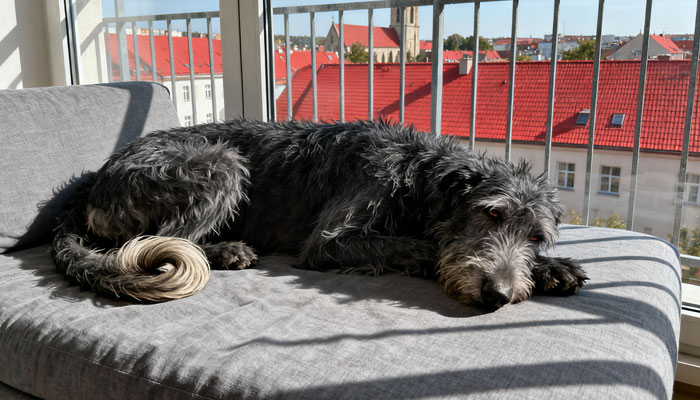Average Lifespan of the Irish Wolfhound

The Irish Wolfhound is the giant that can hardly be missed among the dog breeds. It is famous for its towering, gracious figure and loving, calm personality. The origin of the Irish Wolfhound dates from the period of the Middle Ages when it was a hunting dog in pack hunts for wolves and a guardian by the side of the castle. However, nowadays, it is mostly accepted as a pet.
I. Average Lifespan of the Irish Wolfhound
It is known that their lifespan is highly dependent on their size among dogs, and as a result of that giant breeds usually live shorter lives than small and medium-sized dogs. The Irish Wolfhound is no exception to the abovementioned trend. As per the data provided by the canine health organization, the life expectancy of the Irish Wolfhounds is between 6 and 8 years. Thereby, those with good genes and are well taken care of can live up to 9 years. In addition, the animals that are over 10 years old are not very numerous.
At a comparative point, the range of their lifespan is very similar to other giant breeds (e.g., Great Danes and St. Bernards) but still, quite shorter than those for medium-sized breeds (e.g., Labradors with a 10-12 years average) and small ones (e.g., Pomeranians with a 12-15 years average). The main reason for this big difference is that the organs of giant breeds are more affected by the huge physiological demands. The systems like the skeletal, and cardiac experience intensified wear and tear over a long period of continuous usage. Furthermore, their metabolic rates and cellular life processes are also different than those of smaller breeds.
II. Measures to Extend Irish Wolfhound Lifespan
1. Feeding: Give your dog food that is especially made for giant breeds. Such formulas adjust calcium to phosphorus ratio and protein content to fit their physiological needs and thus prevent skeletal development problem. After they grow up, strictly control the portion sizes and check the weight weekly to avoid that the dog gets fat. Moreover, with the approval of the veterinarian, help your pet’s joints and heart with Omega-3 fatty acids.
2. Physical activity has to be regular and moderate: Take your dog for a short walk when it is a puppy, don’t overdo it. Walk twice a day for 30-45 minutes each adult, if done on grass and so on, the wear on the joints will be minimal. Do not risk your dog having a heat stroke or getting frostbitten by letting it stay outside for too long in hot or cold weather.
3. Medical Care: Begin a health record as soon as the dog is born. The annual full physical (semi-annual for seniors) should chiefly cover the heart, the hips and blood tests among other things. Follow the vaccination and de-worming routines. Take your pet to the vet immediately when it shows abnormal symptoms like lack of appetite, marked inactivity, and fast breathing so that a diagnosis and treatment will not be delayed.
4. Let Irish Wolfhounds sleep on soft pads to avoid that the joints at the sleeping place are directly in contact with the hard surface. Don’t let your dog move from one place to another all the time or be at one place for a long time and this way there won’t be any stress because he/she will feel calm and safe which is good for its mental health too and also, a peaceful state of the mind will help to keep a decent level of the body’s functions.
admin
-
Sale!

Washable Pet Cooling Pad for Cats and Dogs
$10.99Original price was: $10.99.$9.99Current price is: $9.99. This product has multiple variants. The options may be chosen on the product page -
Sale!

Washable Cat Window Hammock Cooling Bed
$23.99Original price was: $23.99.$22.99Current price is: $22.99. -
Sale!

Tropical Amphibian Rainforest Tank, Lizard Cage
$38.99Original price was: $38.99.$36.99Current price is: $36.99. -
Sale!

Silent 4-in-1 Waterproof Charging Dog Hair Trimmer
$49.88Original price was: $49.88.$47.99Current price is: $47.99.